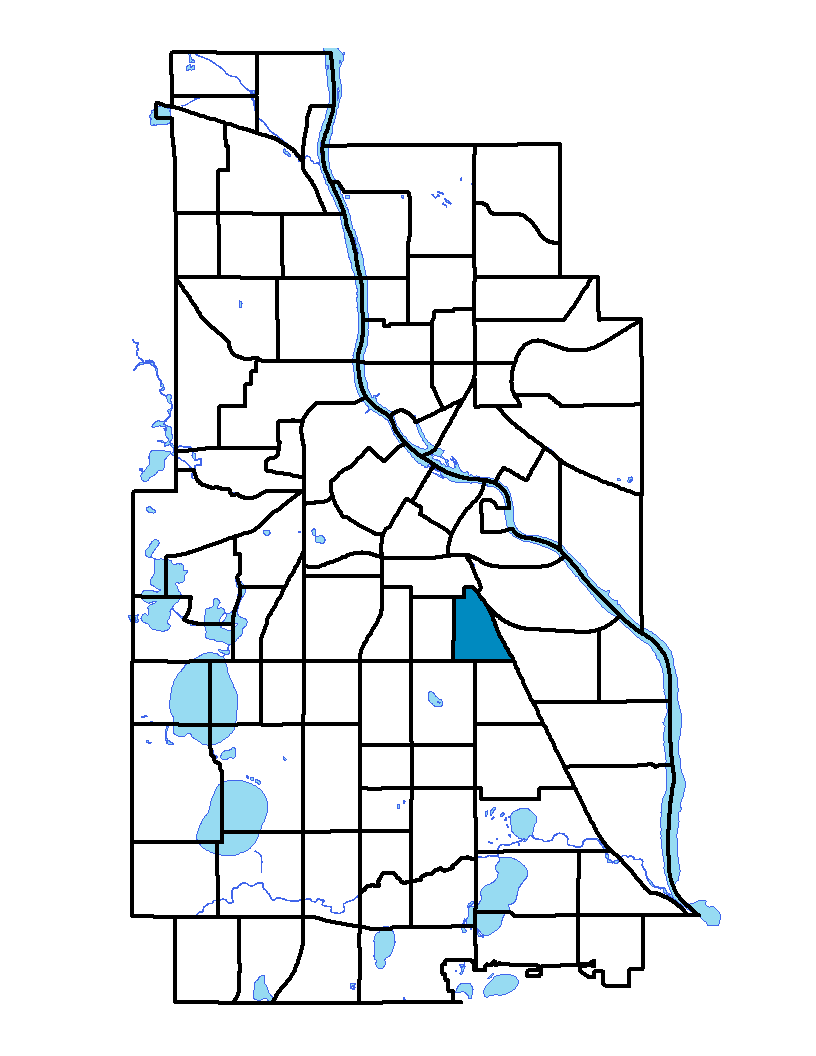East Phillips boundaries follow Bloomington Avenue, East 24th Street, 17th Avenue South and East 22nd Street. The greater Phillips neighborhood was subdivided over the past few years into Ventura Village, Phillips West, East Phillips and Midtown Phillips. Phillips is a diverse area in many ways: its population includes people of many nationalities, and it has a mix of residential, commercial and industrial uses, including Abbott Northwestern Hospital. East Phillips is part of the Alina Backyard Initiative; a dynamic partnership between Allina Health and its neighbors to improve health in the seven neighborhoods immediately surrounding The Commons, Abbott Northwestern Hospital, and the Phillips Eye Institute.
To learn more about the neighborhood association visit: http://eastphillips-epic.com
Indicator Details
| Indicators |
Primary Domain |
Indicator Value | Rank | Tier |
|---|---|---|---|---|
| Transit Accessibility | Transportation | 493.3 | 15 | Top |
| Commute Mode Share | Transportation | 62.2% | 2 | Top |
| Household Transportation Costs | Transportation | 15.9% | 29 | Top |
| Pedestrian Connectivity | Transportation | 86.6 | 78 | Bottom |
| Residential Mobility | Social Cohesion | 74.9% | 57 | Middle |
| Voter Participation | Social Cohesion | 13.3% | 79 | Bottom |
| Walkability | Neighborhood Characteristics | 78 | 20 | Top |
| Offsite Alcohol Outlets | Neighborhood Characteristics | 1 | 6 | Top |
| Food Desert | Neighborhood Characteristics | -% | - | Data N/A |
| Tree Cover | Natural Areas | 26.2% | 64 | Bottom |
| Access to Parks and Open Space | Natural Areas | 3.3% | 57 | Middle |
| Violent Crime | Health Systems and Public Safety | 81.5 | 71 | Bottom |
| Chronic School Absence | Health Systems and Public Safety | 100.0% | 47 | Middle |
| Low Birth Weight | Health Systems and Public Safety | 7.4% | 44 | Middle |
| Motor Vehicle Collisions | Health Systems and Public Safety | 19.8 | 65 | Bottom |
| Preventable Hospitalizations | Health Systems and Public Safety | 7.7 | 69 | Bottom |
| Vacancy Rates | Housing | 15.6% | 80 | Bottom |
| Age of Housing | Housing | 68.2% | 15 | Top |
| Blood Lead Levels in Children | Housing | 9.0% | 74 | Bottom |
| Excessive Housing Cost Burden | Housing | 46.9% | 79 | Bottom |
| Public Assisted Households | Employment Opportunities | 76.9% | 82 | Bottom |
| Employment Rate | Employment Opportunities | 56.6% | 70 | Bottom |
| Long-Term Unemployment | Employment Opportunities | 11.7% | 83 | Bottom |
| Travel Time to Work | Employment Opportunities | 28.6 minutes | 87 | Bottom |
| Residential Proximity to Traffic | Environmental Hazards | 17.9% | 54 | Middle |
| Proximity to Brownfield Sites | Environmental Hazards | 23.1% | 74 | Bottom |
| School Proximity to Traffic | Environmental Hazards | 0.0% | 1 | Top |
| Proximity to Superfund Sites | Environmental Hazards | 100.0% | 86 | Bottom |
| Toxic Releases from Facilities | Environmental Hazards | 0.0% | 1 | Top |
| Reading Proficiency | Educational Opportunities | -% | - | Data N/A |
| Adult Educational Attainment | Educational Opportunities | 61.1% | 84 | Bottom |
| High School Graduation Rate | Educational Opportunities | -% | - | Data N/A |
| School Readiness Scores | Educational Opportunities | -% | - | Data N/A |
| Preschool Enrollment | Educational Opportunities | 44.2% | 49 | Middle |
| Business Retention | Economic Health | 8.1% | 2 | Top |
| Access to Mainstream Financial Services | Economic Health | -% | - | Data N/A |
| Local Business Vitality | Economic Health | 51.6% | 53 | Middle |

